THE
MEDITERRANEAN
The
Mediterranean is characterised by a high
diversity of species and ecosystems, seas
and lands of high productivity, a moderate
climate and a particular landscape, harmony
between man and nature. Some of the problems
that affect the region include the rapid
urbanisation of coastal zones that reduce
the extent of natural areas; the modification
of coastal landscapes; the increasing
conflicts in the use of land, water and
other natural resources; the increasing
loss of soil due to erosion, and the scarcity
of water.

At
the same time the dumping of toxic substances
on the shores, and the over-exploitation
of fisheries are a threat to the rich diversity
of flora and fauna in the Mediterranean,
a key tourist destination.
The
approach of Andalucia….
Considering
the specific character of the region in
the European context, the Consejeria de
Medio Ambiente (Junta de Andalucia) has
supported the creation of a Mediterranean
office ever since it joined the Union.
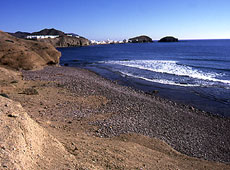
In response to the pressing needs, and under
the auspices of IUCN, the Centre for Mediterranean
Cooperation was created with the financial
support of the Consejeria de Medio Ambiente
(Junta de Andalucia) and the Ministerio
de Medio Ambiente of Spain. The office is
located in the Parque Tecnologico de Andalucia
in Malaga.
The IUCN
Centre for Mediterranean Cooperation
During
the 2nd World Conservation Congress in Amman
(Jordan), the members finalised the programme
and on 5 December 2000 the IUCN Mediterranean
office was inaugurated.
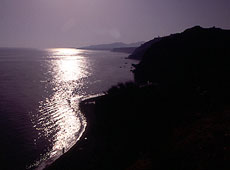
The
Consejeria de Medio Ambiente, the Mininstry
for Environment and IUCN signed an agreement
to support the functioning of the office
and programme.
A
vision for the Mediterranean
Sustainable livelihoods
and biodiversity conservation are promoted
through cooperation and supported by shared
values and culture
The
Goal of IUCN Centre for Mediterranean
Cooperation *
To
influence, encourage and assist Mediterranean
societies in achieving both the conservation
and sustainable use of natural resources,
and sustainable development.
*
As defined
in the 2000-2004 Mediterranean Strategy
Membres
IUCN has more than 170 members in
the Mediterranean region:
- Most
states bordering the Mediterranean Sea,
including Andorra, Jordan and Portugal
which can be considered culturally and
ecologically linked to the region.
-
Government bodies.
-
NGOs of national or international scope.
The
centre's priorities
- BIodiversity
conservation.
- Sustainable
use of natural resources.
The
Mediterranean in figures
- Age
in its current form : 5 million years
- Length
of coastline : 46,000 kilometres
- Sole
natural exit : Straits of Gibraltar (15
km separate Europe and Africa)
- Water
inflow from the Atlantic : 1.5 million
m3 per second
- Estimated
renewal period of Mediterranean sea water
: 80 years
- Average
depth : 1,500 metres
- Main
crops : cereals, olives, vines
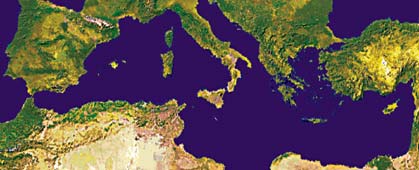
- Commercial
fish : approx 100 species
- Countries
: Albania, Algeria, Bosnia-Herzegovina,
Cyprus, Croatia, Egypt, France, FYROM,
Greece, Israel, Italy, Jordan, Lebanon, Libya, Malta,
Morocco, Monaco, Palestine, Portugal Serbia,
Montenegro, Slovenia, Spain, Syria, Tunisia,
Turkey.
- Main
rivers : Nile, Rhone, Po, Ebro
- Mountain
chains : Sierra Nevada, Alps, Dinaric
Mountains, Rodope Mountains and Taurus
Mountains
- Flora
: 25,000 species (half endemic aprox.)
- Marine
fauna : 900 species
- Coastal
population : 40% (150 million people)
- Mean
annual population growth rate : 1.3%
- Coastal
tourism : 100 million people per year
- Area
covered by tourist facilities : 4,000
km2
- Hotel
beds : 40 million
- Vehicles
: 120 million
- Length
of major roads : 2.5 million km (of
which 1.8 million in the north)
- Marine
traffic : 200,000 crossings per year,
2,000 ships at any one time (of which
300 tankers)
- Waste
waters disposed of untreated : 70-85 %
- Main
polluting industries : chemicals, refineries,
metal production, mines, and leather
- Petrol
refineries : 60 which dump 20,000 tonnes
of petrol per year into the sea
- Thermal
power stations : around 100
- Energy
consumption : 800-900 million toe (tonnes
oil equivalent)
- Erosion
risk : 50% of land area
- Average
annual area affected by fires each year
: 200,000 hectares.
Sources: IUCN - EU -OECD -UN - UNEP
MALAGA:
Venue for the Mediterranean Cooperation
Centre
Malaga
is at the Centre of the Alboran Sea, near
the Strait of Gibraltar and North Africa,
with more than half a million inhabitants
only in the city.
Throughout its history, Malaga has been
associated with the Mediterranean and its
different cultures, and continues to receive
the enriching influence of tourists and
migrants.
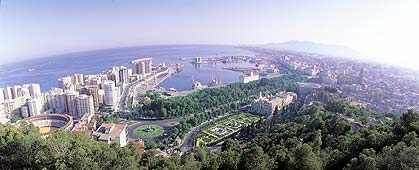
Malaga is an important communication node
with railways, maritime routes, and a major
airport that links principal European capitals
and North Africa through direct flights.
The Parque Tecnologico de Andalucia, the
airport and the university form the powerhouse
of Malaga.
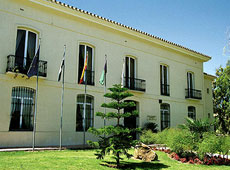
The
local agenda 21 "Green Chapter of Malaga",
bases the development of the city around
the paradigm of sustainable development
with one objective:
"to
consolidate Malaga as a metropolitan city,
a metropolis of high environmental quality,
the economic and technological capital of
Andalucia; main tourist destination for
European leisure."
|